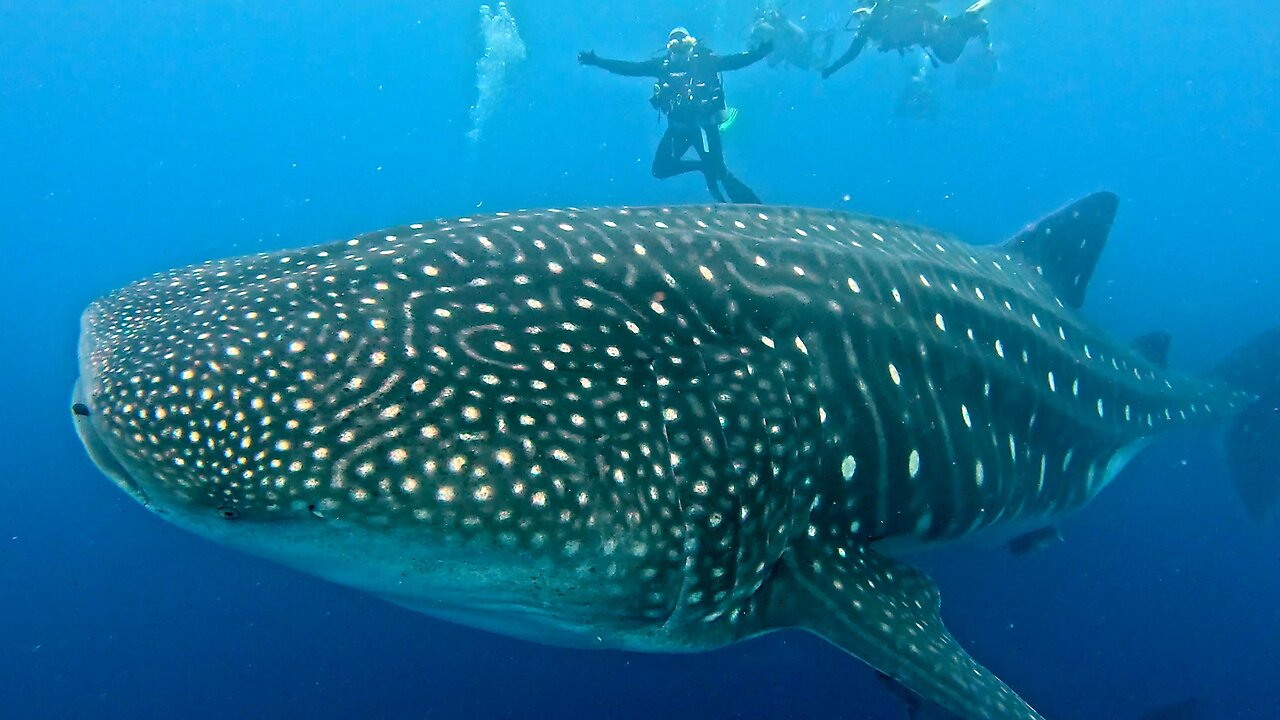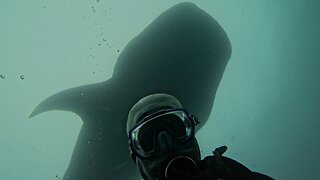Premium Only Content

Swimming With the Giants, Whale Sharks of Darwin Island
Whale sharks are the largest species of fish on the planet. They are among the largest animals to have ever lived. Only blue whales, sperm whales, and humpback whales (all mammals) are larger. The largest ever recorded was 18.8m (almost 62 feet) long. The only fish that has ever lived that was larger than a whale shark is the now extinct megalodon.
Whale sharks have enormous mouths with no teeth. They feed by filtering fish eggs, krill, and small fish, trapping them in baleen plates (comb-like structures) as whales do. They swim with open mouths, eating enormous amounts of tiny creatures daily.
Plagued by parasites and remoras, the whale sharks follow ocean currents to the Galapagos Islands for the cleaning stations. Trevallies, silky sharks, Galapagos sharks, and blacktip reef sharks prey on the remoras, ridding whale sharks of the nuisance fish that clog their gills and create drag. The remoras attach themselves with sucker plates, hitching a ride. They detach themselves to eat feces and scraps of fish in the water, then reattach to the whale shark. This makes swimming much more difficult for the whale sharks. Small wrasses make their home here and they eat the smaller parasites from the mouth and gills of the whale sharks.
Three strong ocean currents collide near the remote Darwin Island, bringing an upwelling of cold water and nutrients from the depths of the ocean. This provides food for many of the species here, such as hammerhead and Galapagos sharks. It is a unique combination of conditions that creates this abundance of whale sharks.
Scuba divers wishing to meet a whale shark close up venture here from all over the world. These lucky divers slipped into the water at the base of Darwin's Arch and found themselves almost surrounded by the magnificent animals. In 7 dives, they sighted more than 20 whale sharks. Some of the giant beasts exhibited curiosity, slowly cruising past them or even turning toward the divers as if they were hoping that the clumsy humans were able to provide a cleaning service for them.
To look one of these giants in the eye is an experience that takes your breath away. Their gorgeous markings and majestic size make them one of the most sought after animals for underwater explorers. These clips are merely the highlights of the experiences that two tourists from Canada had in 36 hours under the waves
-
 1:17
1:17
WildCreatures
1 month ago $0.80 earnedWhale Shark Performs World's Largest Photo Bomb in the Galapagos Islands
1.89K2 -
 LIVE
LIVE
ThatStarWarsGirl
8 hours agoTSWG LIVE: Discussing STAR WARS News with Special Guest Star Wars Theory!
1,017 watching -
 2:42:40
2:42:40
Laura Loomer
7 hours agoEP162: LIVE: President Trump Addresses The Nation
56.2K26 -
 1:32:05
1:32:05
Adam Does Movies
12 hours ago $7.03 earnedRob Reiner Films + Movie News + AMA - Live!
32.1K1 -
 47:57
47:57
Professor Nez
10 hours ago🚨LIVE NOW: President Trump Addresses the Nation from the Oval Office
36.4K34 -
 28:17
28:17
The White House
7 hours agoPresident Trump Delivers an Address to the Nation
89.1K133 -
 4:44:53
4:44:53
Drew Hernandez
1 day agoTRUMP ADDRESSES THE NATION & BONGINO ANNOUNCES FBI DEPARTURE?
66K22 -
 2:37:30
2:37:30
Badlands Media
18 hours agoBadlands Media Special Coverage - MY FELLOW AMERICANS the Alpha Warrior Show & Redpill Project
71K34 -
 22:54
22:54
Jasmin Laine
13 hours agoMedia MELTS DOWN as Poilievre Surges—Ottawa Loses Control of the Narrative
33.6K17 -
 59:50
59:50
BonginoReport
10 hours agoDan Bongino Is Leaving The FBI - Nightly Scroll w/ Hayley Caronia (Ep.199)
292K260